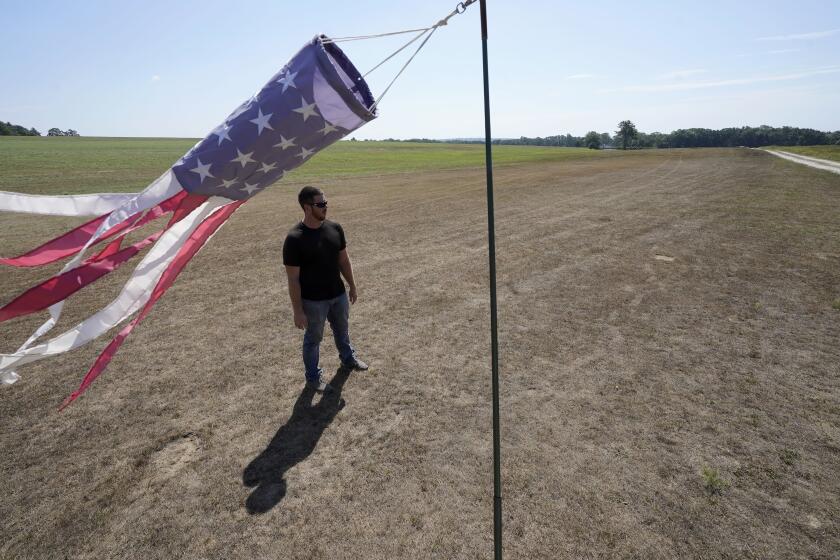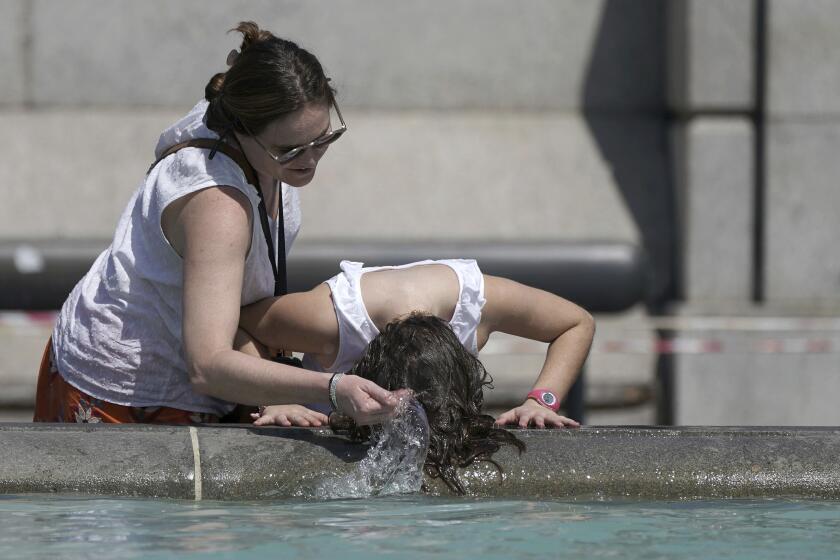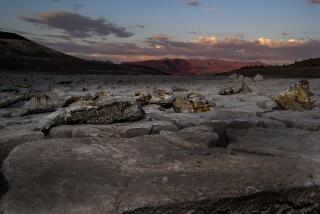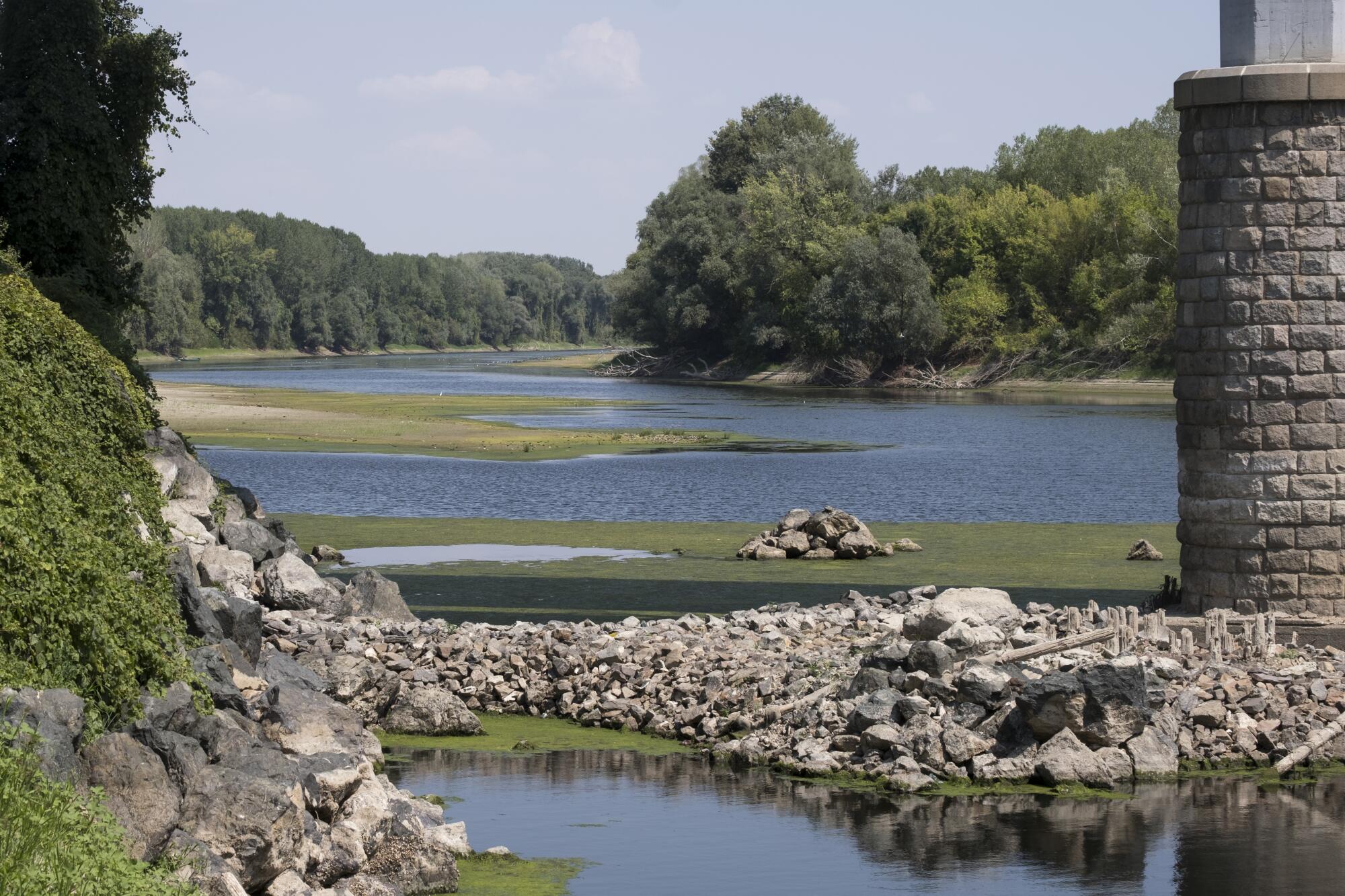
- Share via
MANE, France — Each spring and summer, Frederic Esniol plants millions of seeds for lettuce sold at big grocery chains, making his family farm a jewel of this historically bountiful region of France.
But this year, a menacing combination of dry skies and record-setting heat has ruined about half of his water-hungry crop, threatening the 270-acre business about 70 miles northeast of the Mediterranean port city of Marseille.
“We’ve never seen a drought like this before,” said Esniol, 55, a fourth-generation farmer.
It’s not only France. A withered Europe faces what scientists say could be its worst water shortage in the hundreds of years on record.
Summer has brought severe drought to the northeastern U.S., which has farmers begging for rain and many communities limiting nonessential water use.
Farms are going fallow, and vineyards are seared. Reservoirs and aquifers have been depleted. Rivers have dried up to reveal Roman-era artifacts and unexploded war munitions. Wildfires have raged across a dozen countries. Scores of small cities and towns are trucking in water because the taps have run dry.
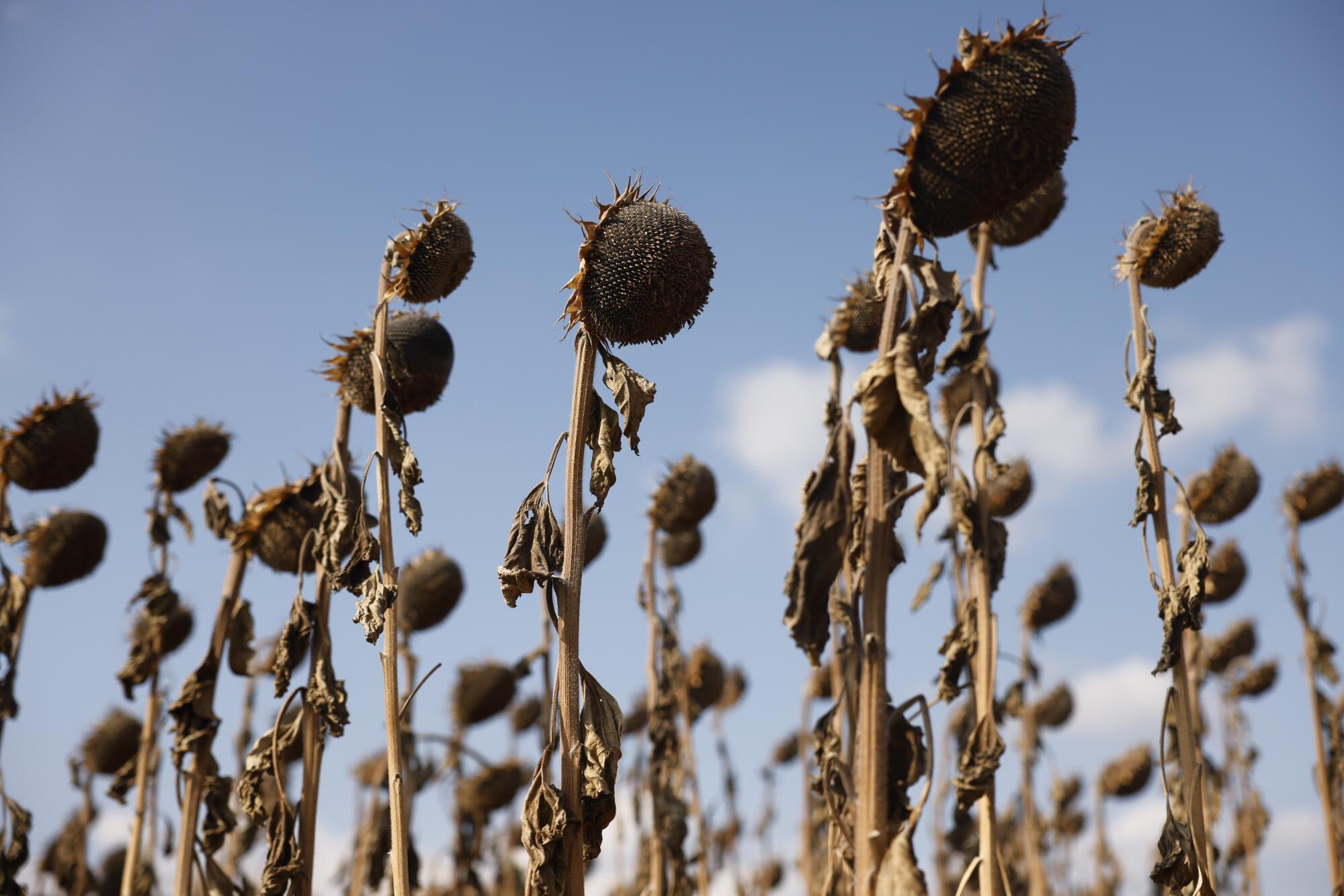
Altogether, 64% of the continent — 13 of the 27 nations in the European Union, as well as Britain, Serbia, Moldova and Ukraine — is either facing drought or in imminent danger of it, according to a recent report by EU scientists that predicted at least three more months of “warmer and drier” days.
The United Kingdom “has reminded me this summer of the times I have visited California: hot, dry and little to no rain,” said James Cheshire, a professor at University College London who studies weather patterns. “I imagine it’s not too different in many parts of Europe. It’s a very unusual time.”
Alpes-de-Haute-Provence, the region that’s home to Esniol’s farm, is accustomed to warm, arid summers. This year, triple-digit heat waves in southern France shattered records, while rainfall has been half the usual amount.
Esniol’s lettuce is prized for its crisp, leafy heads with delicate white cores, sold across France in Leclerc and Carrefour, the nation’s biggest grocery chains.
Records are tumbling as temperatures are rising across Europe, where a monster heat wave is fueling wildfires and causing deaths. The mark in London hits about 104 Fahrenheit.
But in July, the government ordered the region to drastically reduce water consumption, and the next month, the dam that supplied his farm ran dry.
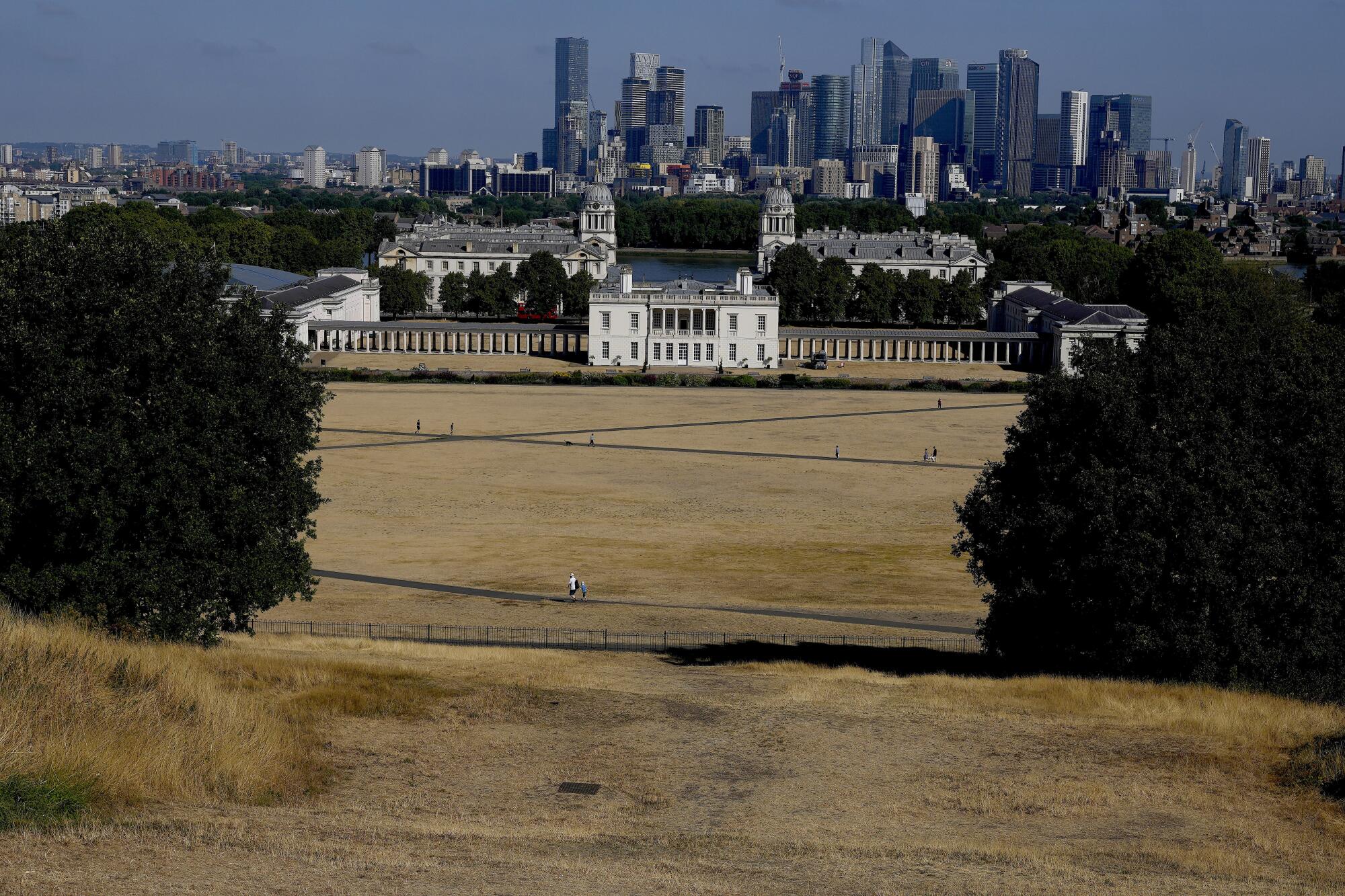
Officials earmarked reserves for drinking water, firefighting and emergencies — and for limited watering on farms that produce critical food staples. Even that could not stop Esniol’s lettuce from withering in the relentless sun.
To make up for some of the loss, he has upped his wholesale price by 26% to 63 cents a head.
Nearby ranchers suffered even more.
Lily Goletto, a friend of Esniol who raises 850 sheep, said she paid $22,000 this year to buy extra feed after everything on her grazing land — sunflowers, sorghum, grass and alfalfa — died. Still, it won’t be enough.
“We’re going to have a sad autumn,” said Goletto, who plans to sell 150 ewes. “We’ll still lose money, but we don’t have any other option. Everyone is in the same boat. They’re also in a drought, which means they’re not harvesting anything either. It’s a vicious cycle, and it gets worse and worse.”
Drought isn’t new to Europe — which has a wide variety of climates and rainfall patterns — and the current one started in 2018. But scientists say human-induced climate change is transforming the continent, raising the likelihood that it will experience more frequent and persistent drought, like the American West.
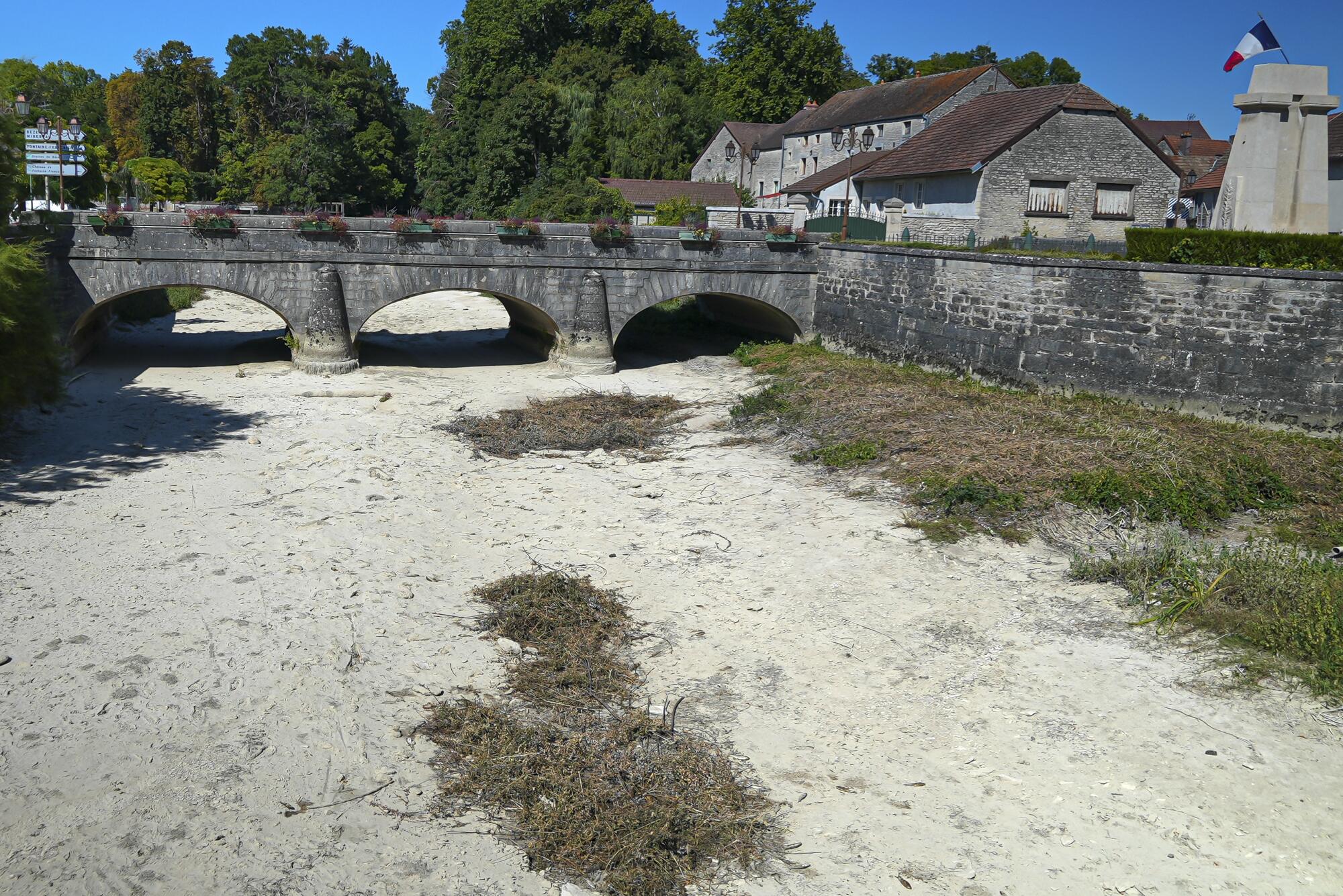
“We always think Europe is a water-rich region, especially the central and northern parts,” said Rohini Kumar, a hydrologist at the Helmholtz Center for Environmental Research in Leipzig, Germany. “No longer. We are not water-rich. Over a couple of years, we have undergone dryness. We have to start rethinking what kind of crops we grow and how we manage our water.”
The shift may be linked to a high-pressure system in the North Atlantic known as the Azores High, which has expanded as the planet has warmed, researchers say. The system pushes rainfall north, causing drier conditions in Portugal, Spain and the western Mediterranean.
Politicians and activists have seized on the crisis as a reminder that the world is failing to meet its goals for reducing greenhouse gas emissions and is on course for even worse effects of climate change, including more fires, more severe storms and rising sea levels.
“Climate change kills,” Pedro Sánchez, the prime minister of Spain, said recently as he surveyed trees charred in a massive wildfire in Extremadura, a region bordering Portugal. “It kills people, kills our ecosystem, the biodiversity.”
The European Commission estimates that the current drought has cost the EU $9 billion a year — a figure it said could rise to $45 billion by the end of the century as the climate continues to warm.
The most immediate concern is agriculture.
In Italy, rice paddy farmers who rely on the severely depleted river Po warn of risotto shortages. In Spain, the world’s biggest producer of olive oil, reduced rainfall has cut production by a third.
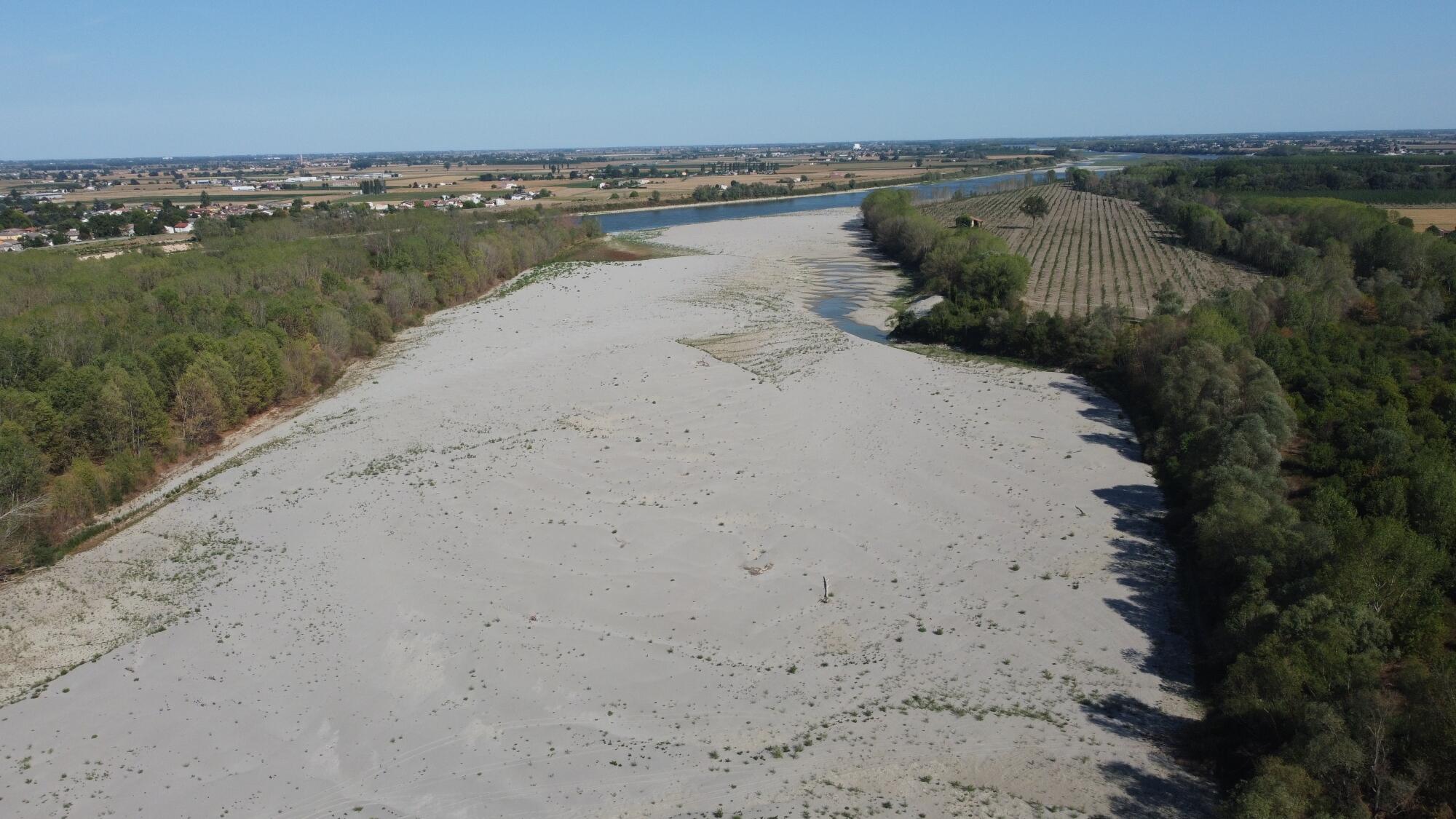
In Germany, the drought struck as farmers were still hurting economically from another climate-linked disaster — flooding — that decimated crops in 2021. Yields improved this year but still lag behind averages for the last decade. Agriculture groups say the potato and sugar beet harvests, which come later in the year, could be especially disappointing if the drought persists.
“The prolonged drought in many regions of the country shows once again that farmers are feeling the effects of climate change very directly,” said Joachim Rukwied, president of the German Farmers Assn.
Remains identified as Thomas Erndt, a 42-year-old Las Vegas resident, who drowned 20 years ago.
Perhaps the most worrisome effect of the drought in Germany has been the depletion of the Rhine. As the river receded this summer near the city of Emmerich, close to the border with the Netherlands, the hull of a ship slowly appeared in the muck. It turned out to be De Hoop, which sank in 1895 after catching fire when a dynamite-laden freighter docked next to it exploded.
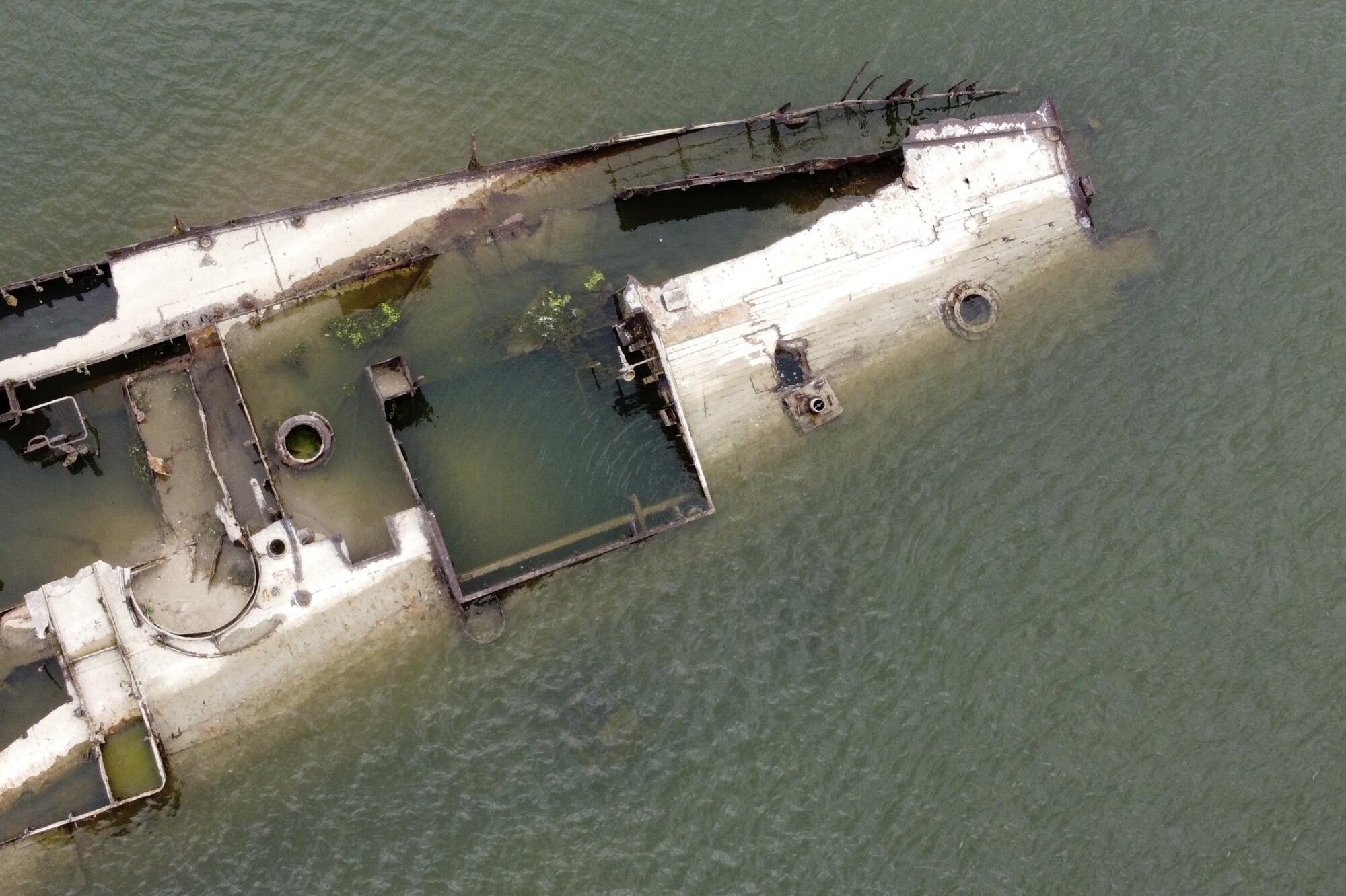
In Bonn, Germany, authorities have warned residents not to walk around dried-up riverbanks because resurfaced unexploded munitions from World War II could detonate.
The river, which traverses Germany, is a lifeline of the economy, its importance akin to that of the Mississippi in the United States.
At one point last month, an already shallow portion fell to a depth of 15 inches, making it impassible for cargo ships. Even in deeper spots, shippers have been forced to slash cargo loads so boats sit higher in the water.
“Climate change is making the situation on the Rhine worse and worse all the time,” said Marco Speksnijder, who oversees 25 ships that ply the river for the Contargo shipping company.
“There’s less snow in the Alps, and that means less water in Lake Constance and less water in the Rhine,” he said, referring to the lake that borders Germany, Austria and Switzerland. “It’s making it more difficult to plan ahead, because the water levels are so low more often.”
Of course, water levels will eventually rise again — which could present other problems in the Netherlands. The drought is threatening the 19th century network of dikes that the lowland country relies on to prevent flooding. Often built from peat, the dikes absorb water like sponges and, without enough rain, become prone to holes and cracks.
Even Britain, known for its year-round rains and plentiful greenery, has been forced to contend with the prospect of a drier future. Rainfall in July was just over a third of normal in London, and much of the rest of southern England received about one-fifth of an inch — the lowest total for the month since the government started keeping records in 1836.
Parks in London were crunchy and brown until recent scattered rains offered some reprieve. Now, trees are showing signs of what scientists have dubbed a “false autumn” as leaves change color and fall earlier than usual under the stress of a changed climate.
“I came here for the last bit of summer vacation, but it feels more like a dry L.A. park mixed with the New York fall,” said Janice Tran, a 30-year-old tourist from San Francisco who picnicked with friends late last month in the London Fields park in east-central London.
Ian Holman, a professor who leads the Center for Water, Environment and Development at Britain’s Cranfield University, said the drought had broken the image of “the U.K. as a green and pleasant land.”
“We typically don’t have a dry season and have as much rainfall in the summer as the winter,” he said.
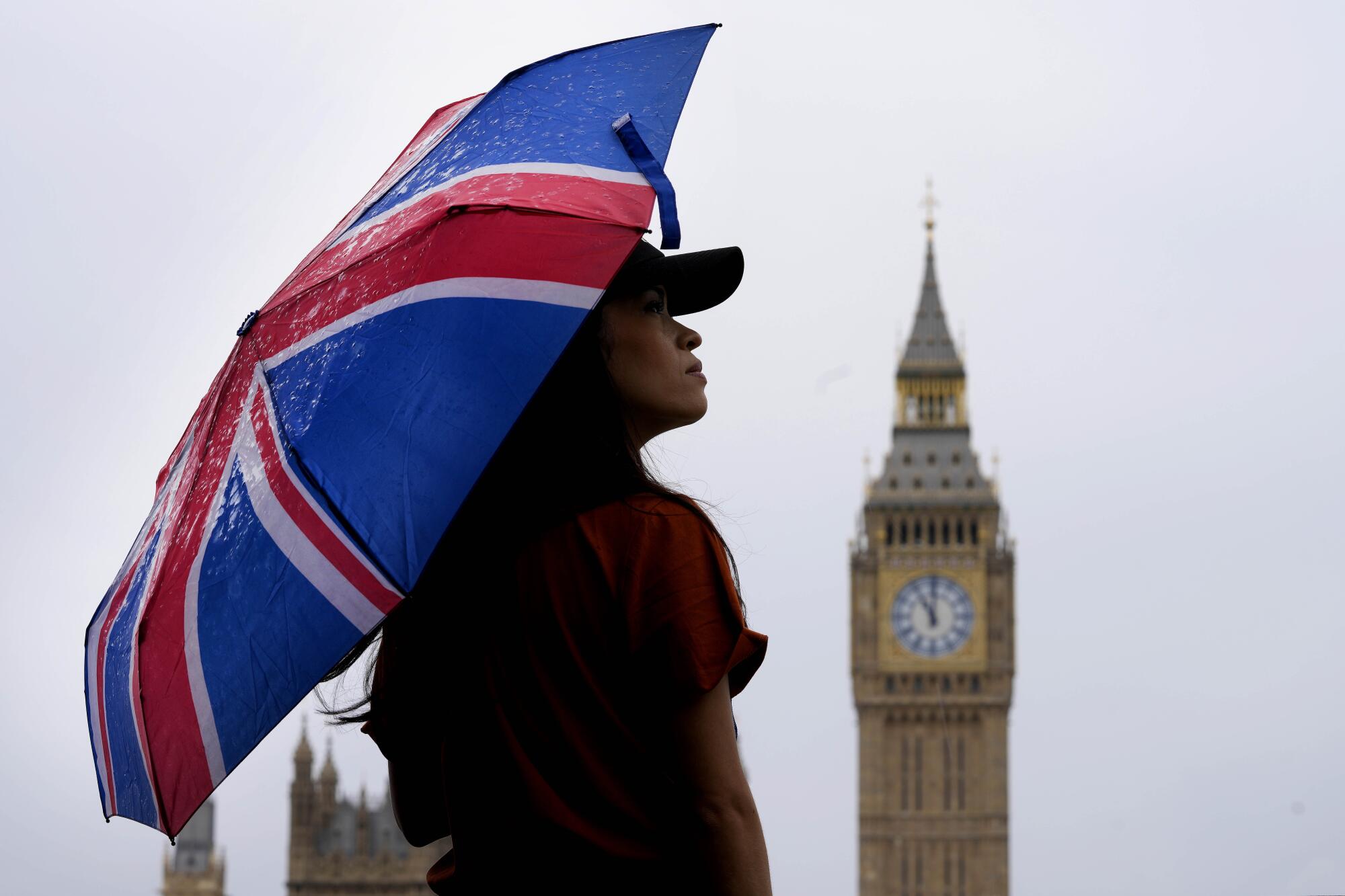
In August, authorities declared all nine regions of England to be in drought as utility companies banned the watering of gardens.
Lidl, a discount grocery chain, said it would sell “stunted” produce to make up for expected shortages. Another chain, Waitrose, said it would expand its “a little less than perfect” range of items, including apples, carrots and strawberries.
“As long as my food bill does not increase and everything is safe and edible, I have no problem with my fruits and vegetables looking a little wonky,” Jessica Steiner, a 42-year-old web designer, said as she browsed the produce aisle at a Lidl in East London.
Back in France, Esniol is pondering his future. Rather than throw away his unsellable lettuce, he let Goletto bring her sheep to his fields to gobble it up.
“It was the old lettuce, the broken lettuce, the heads that got left behind,” Esniol said. “But at least it was fresh, and that’s what the animals need.”
Still, he knows that the survival of the farm founded by his great-grandparents might depend on forces beyond his control.
“If we have a good autumn with lots of rain, that will help. It could even turn out well,” Esniol said, “But if we don’t, we’re cooked.”
Times staff writer Kaleem reported from London and special correspondent Johnson from Mane. Special correspondent Erik Kirschbaum in Berlin contributed to this report.
More to Read
Sign up for Essential California
The most important California stories and recommendations in your inbox every morning.
You may occasionally receive promotional content from the Los Angeles Times.
